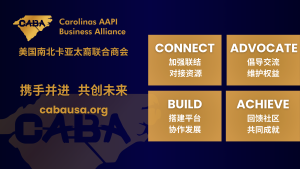
编者按:
12月7日,北卡北卡罗来纳州的三角学院(Triangle Learning Academy)特邀总部在加州的教育机构HS2 Academy(哈佛全方位)来到北卡,传授大学申请规划和注意事项。
【华e生活】特约青少年记者Emma Yu 倾听曾担任哈佛大学面试官资深大学升学顾问 Patrick Tapia带来的讲座,“对接”到对一个9年级学生来说认为重要、有用的信息和启发。
特别说明:Emma Yu 用英文报道这次讲座。中文系【华e生活】编辑编译。
■作者:【华e生活】特约青少年记者 Emma Yu,Green Level高中9年级学生
随着申请美国顶尖大学的学生人数不断增长,其录取率也随之暴跌。哈佛大学教育硕士、学士及有7年招生面试经验的帕特里克·塔皮亚(Patrick Tapia)先生,在12月7日的分享会中解读了2025学年大学申请的变化。
第一点:把握时机
塔皮亚指出,申请时间的选择至关重要。提前2到4周提交申请有助于给招生官留下深刻印象。他解释道:“招生官通常会在截止日期之前,将系统中已提交的部分申请下载并提前审阅。”他进一步强调,接近截止日期时,招生官每天需要阅读多达60份申请,精力有限,后期提交的申请可能无法得到充分关注。“了解这一流程并选择合适的提交时机,对你来说可能是极为有利的。”他说。
提前提交申请还有助于增加面试机会。“大学在信息方面总是处于饥渴状态。”塔皮亚解释道,“如果你性格优秀,或者有很多值得分享的精彩活动经历,面试会成为一个让你脱颖而出的好机会。”
第二点:选择合适的申请方式
选择最适合自己的申请计划也很重要:提前行动(EA)、提前决定(ED)或常规申请(RD)。
- EA 是非约束性申请,学生无需承诺就读;
- ED 是约束性申请,一旦被录取,必须入学。
塔皮亚提到,提前申请的录取率通常更高:“[布朗大学]几年前的总体录取率是5.5%,而ED录取率接近16%。如果和常规申请相比,高出4到5倍。”
尽管约有300个EA/ED录取名额会分配给运动员或特殊背景的学生,但即使除去这些名额,提前申请的录取率仍是常规录取的3倍左右。
第三点:合理规划申请院校名单
制定合理的申请院校名单对成功至关重要。塔皮亚建议将院校分为三类:
- 三分之一为高度选择性院校(“梦想校”);
- 三分之一为有较高录取可能的院校(录取率60%-80%);
- 剩余三分之一为“保底校”(录取率80%-100%)。
他还指出,保底校通常在奖学金和经济资助方面更为慷慨。“如果你的家庭经济状况较为困难,可以选择那些在你的专业领域表现出色的保底校,这不仅可能让你获得更多奖学金和资助,还可能为你将来的研究生或职业发展奠定基础。”
第四点:注重申请文书
在录取过程中,申请文书扮演着至关重要的角色。塔皮亚强调:“最重要的是展现真实的自我。这是一个展示你原创思维、机智以及整体个性的机会。”
他提醒不要写“老生常谈的四大主题”:
- 简历式文书:试图将所有活动堆砌在一篇文章中,缺乏深入的性格展现。
- 悲情故事:没有体现成长,仅仅是一段没有主题的故事。
- “洛奇式”文书:描述逆袭的背景、训练过程和最终胜利,但过于老套。
- 过度披露(TMI):泄露过多个人隐私,缺乏深度与主旨。
总体而言,他建议在文书、面试、课外活动描述及补充写作中,全方位展示个人特色。“当然,也要敢于追梦。有时你的学术数据可能不占优势,但你的叙述或文书能真正触动审阅者。”
帕特里克·塔皮亚与HS2学院
帕特里克·塔皮亚是加州HS2学院的辅导副总裁。该机构专注于帮助学生应对大学申请挑战,累计促成1000余名学生进入常春藤院校,处理了超过10万份申请,帮助学生赢得数百万美元经济资助。面对日益激烈的大学录取竞争,塔皮亚及HS2学院团队希望在学生人生的重要时刻助其一臂之力。

College Acceptance Rates are Plummeting, Here’s What To Do
■By Emma Yu ,9th Grade, Green Level High School
With the growing number of applicants to top colleges in the U.S., their acceptance rates are consequently plummeting. Mr. Patrick Tapia, Ed. M and B. A. at Harvard University and admissions interviewer for 7 years, explained the changes to college applications in the 2025 school year in his webinar on December 7th.
The first thing that’s important to know is timing, he says. He explains that submitting your application 2-4 weeks early will be advantageous since it leaves a strong impression on the admissions officer. “What [admission officers] typically will do then is that even before the deadline, if they know that there are already a certain number of applications that have been sent to the school and it’s already in their system, they can download it…they will start reading some of these files.” Tapia points out that since towards the end of the deadline, admissions officers will have to read as many as 60 applications a day, they will not pay equal attention to the files they read at the end of the day when they’re tired and zoning out. “[If] you know the process and you know when to submit your applications, that’s the most advantageous for you. It could actually be incredibly beneficial,” he says.
Earlier submissions could also earn you an interview. “Colleges are information starved,” Tapia says, “And, obviously, if an interview can really help you–if you have a great personality or tons of cool activities that you can talk [about]–you definitely want to take advantage of that part of the process because it’ll help distinguish you from other applicants as well.”
The next important point is deciding what admission plan is best fit for you: early action, early decision, or regular. Early action (EA) and early decision (ED) both have earlier deadlines. While EA is non-binding, ED is binding, meaning if you are accepted, you must attend the school. Mr. Tapia informs us that early admission plans have a higher acceptance rate; “[Brown’s] overall rate a couple years ago was 5 a half percent. Their ED rate was almost 16%. But if you’re only comparing it to their RD (regular decision) rate, it’s staggering. It’s almost 5 times [that]–it’s 4 and a half times.”
He explains that while about 300 EA/ED acceptances are special cases such as athletes or VIPs, subtracting those cases, the rate is still about three times higher than the regular decision rate.
Third, picking a good college list is crucial to your success. Tapia suggests having about one-third of the list comprised of selective “dream” colleges, another third for those within your reach (60-80% chance of acceptance), and the last third for “safety” schools (80-100% chance of acceptance). “[Oftentimes], some of those safety schools tend to also be the more generous ones when it comes to things like scholarships or financial aid. So if your family situation is…kinda tough right now, it would be really great if [you] can get a scholarship…If you can find a likely or safety school that would be easier for you for you to get into, but is also really strong for your major, that can actually be a good opportunity for you to get more financial aid and more scholarships and also position yourself to be able to kind of do really well for things like grad school and professional school later on.”
Lastly, he stresses the importance of essays in the admissions process. The most important thing, Tapia instructs, is being original and authentically yourself. “The first one here is that you really wanna showcase who you are. This is a chance for you to showcase things like your original thinking, your wit, your personality overall.” As for what not to write, he warns against the “big four cliche topics”: the resume, the sob story, the Rocky essay, and the TMI.
The resume essay is where everybody tries to cram all their activities into one college essay, but there’s not enough room for elaboration and deep evaluation of personality. The sob story and TMI essays have the same issue; it rarely shows growth and seems like a story without a theme. The Rocky essay, which consists of the underdog background, a training montage, and a final victory, is too predictable and uninteresting.
In general, he recommends focusing on showing who you are personally–not only in the essay, but throughout the entire application process; in interviews, describing extracurriculars, and optional writing prompts. “And of course, dare to dream. Sometimes your numbers might say, ‘oh, I might not be able to get in’, but there’s something about your narrative. There’s something about your essays that really clicked with the person who read your file.”
Patrick Tapia is the vice president of counseling at HS2 Academy, a California-based institution focused on helping students succeed in the face of college applications, with over 1,000 Ivy League acceptances, more than 100,000 applications processed, and millions earned in financial aid. With the increasing difficulty of being accepted into top colleges, Patrick Tapia, as well as all HS2 Academy staff, hope to lead students in their journey during such a crucial moment of their lives.









